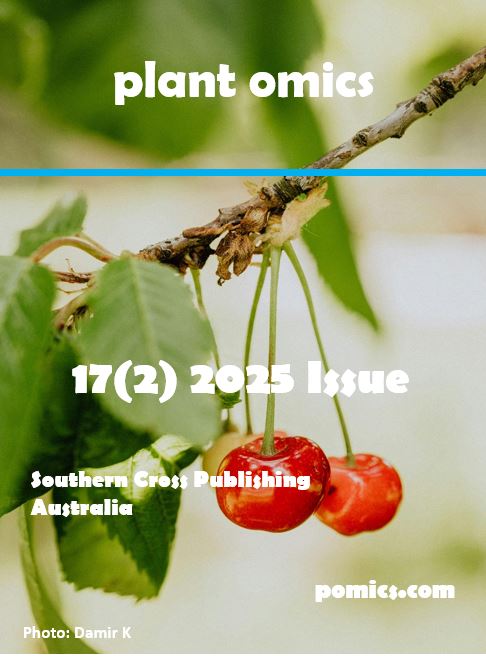Genome-scale mining of simple sequence repeats (SSRs) in the forage grass Urochloa mosambicensis using low-coverage whole-genome sequencing data: abundance, distribution, and composition abundance, distribution, and composition
Keywords:
Abundance, Microsatellites, Capim-corrente, Genetic breeding, Population studies, SSR.Abstract
Simple sequence repeats (SSRs), also known as microsatellites, are common components of prokaryotic and eukaryotic genomes. Microsatellite loci are widely applied as molecular marker systems in plant population studies and genetic breeding due to their codominant inheritance, high polymorphism, and reproducibility. The development of these markers, however, requires prior genomic information. Although low-coverage whole-genome sequencing using the Illumina MiSeq platform provides limited sequencing depth, it is usually sufficient to identify thousands of SSR regions. In this study, low-coverage sequencing was performed on the Urochloa mosambicensis genome using the Illumina MiSeq platform. This tropical forage grass shows strong potential for adaptability and persistence in dry environments, making it a promising feed source for ruminants in harsh conditions. The U. mosambicensis genome was screened for SSRs to evaluate their potential for molecular marker development. The high-quality Illumina sequencing reads were assembled into 32,931 contigs (N50 = 395 bp) using the CLC Genomics Workbench. The software Krait and MSDB were used to analyze the low-coverage U. mosambicensis sequencing data in order to identify and evaluate pure, interrupted pure, compound, and interrupted compound SSRs. A total of 2,665 pure microsatellites were identified, with the highest relative abundances found in trinucleotides (31.52 loci/Mb) and pentanucleotides (16.62 loci/Mb). Hexanucleotides (87.18%) and trinucleotides (86.96%) exhibited the highest proportion of sequences suitable for amplification. A greater abundance of interrupted compound motifs (1.81 loci/Mb) and pure compound SSRs (1.15 loci/Mb) was observed compared to interrupted pure SSRs (0.48 loci/Mb). This study also suggests that non-consensus bases positively influence the size of interrupted pure microsatellites, indicating greater stability against potential mutations. These findings provide a valuable resource for the selection of potential molecular markers for genetic breeding and population studies of the tropical forage species U. mosambicensis.
Downloads
Published
Issue
Section
License
Copyright (c) 2025 Fabio Mendonça Diniz, Ueslei S. Leão, Luíce G. Bueno, Aline B. Negreiros, Geice R. Silva (Author)

This work is licensed under a Creative Commons Attribution-NonCommercial 4.0 International License.

